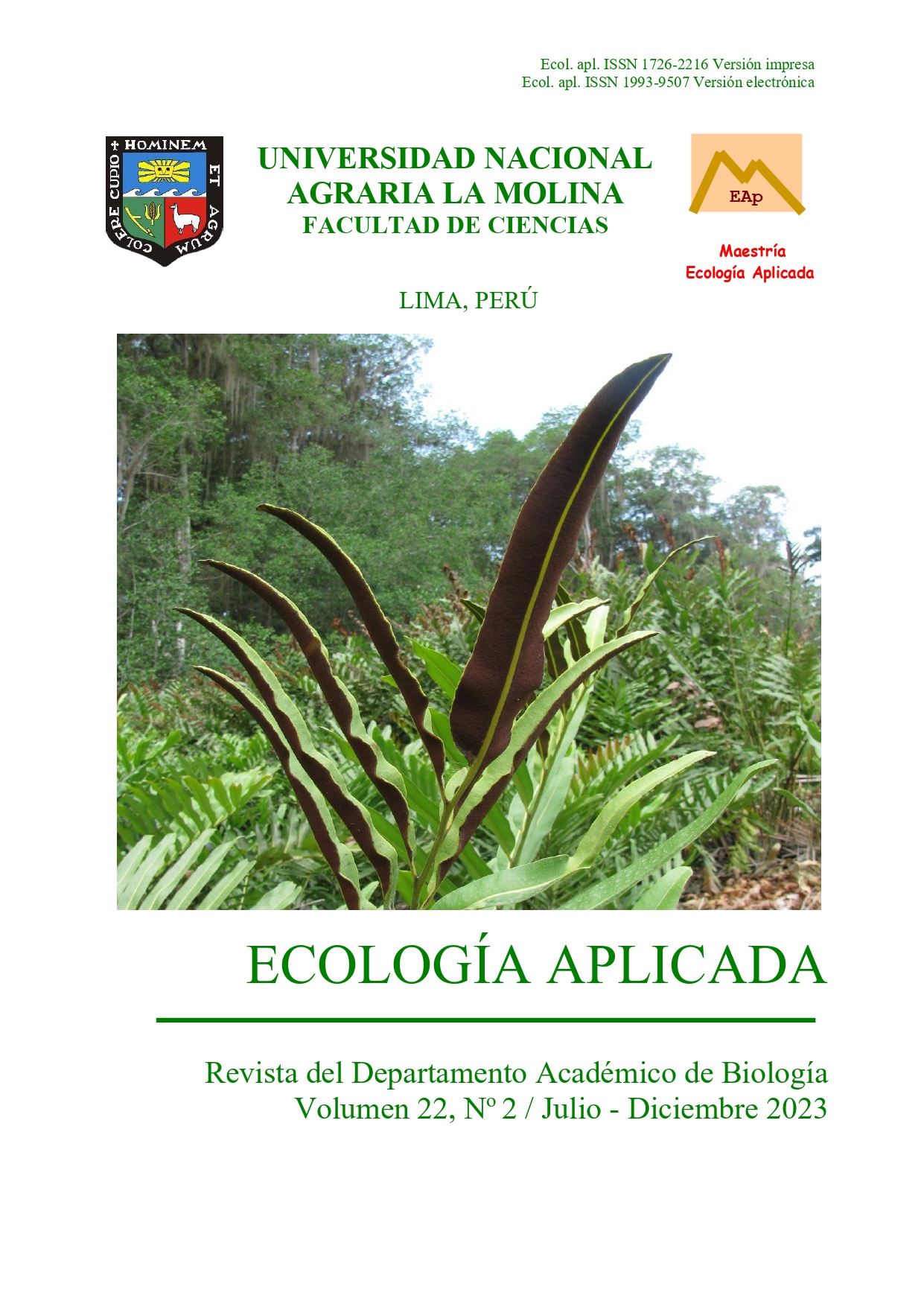FLORISTIC COMPOSITION OF THE TAURA RIVER BASIN GULF OF GUAYAQUIL, ECUADOR
DOI:
https://doi.org/10.21704/rea.v22i2.2088Keywords:
aquatic, Gulf of Guayaquil, mangrove, monocotyledons, Taura river, grassesAbstract
The Taura River basin is made up of the river of the same name, which, with a length of 1,962 km2, reaches the sea, flowing through the Gulf of Guayaquil into the Pacific Ocean, on the coast of Ecuador. Said basin houses a large human development that to a greater or lesser degree could affect the flora of the sector. The objective of this research was to record the Floristic Composition of said basin, floristically characterizing its estuaries and banks, in order to contribute to the floristic knowledge of the Gulf of Guayaquil of the largest in South America. For which eleven stations were established along the riverbank of the basin, with mangrove ecosystems; and formations of lacustrine grasslands of lowlands of tropical dry forest, in which the plant species present were evaluated, based on a population estimate, while the abundance of the herbaceous stratum was evaluated based on the area of its coverage with respect to 100 m2 . The monitoring was carried out both in the rainy regime and without it during the years 2006, 2012, 2018, 2020. A total of 42 species, 37 genera and 23 families were recorded in the eleven sampled stations. 55% are monocots, 40% eudicots and 5% ferns. In Monocotyledons, the Poaceae family is mostly represented with 12 species. The phytocoenosis in the Taura river basin has been influenced by the season of more or less precipitation within the same year, characterized mainly by the plant communities of riverine forest (BR) and herbaceous scrub (MH) and mangrove hydrophilic forest. (BH-M).
Downloads
References
APG IV. 2016. An update of the Angiosperm Phylogeny Group classification for the orders and families of flowering plants: APG IV. Botanical Journal of the Linnean Society, 181(1): 1–20. https://doi.org/10.1111/boj.12385.
Convention on Biological Diversity. 2017. Ecologically or Biologically Significant Areas “Golfo de Guayaquil”. In: The Clearing-House Mechanism of the Convention on Biological Diversity. https://chm.cbd.int/database/record?documentID=20404 9.
Cuasquer E., Salvatierra D., Jiménez E. & Boira H. 2016. La vegetación del humedal “Abras de mantequilla”. Composición florística. Bases para su restauración. Ciencia y Tecnología, 9(1): 17. https://doi.org/10.18779/cyt.v9i1.159.
Lægaard S., Harling G. & Andersson L. 1997. 214(1): Gramineae (part 1) – Introduction, Centothecoideae, Arundinoideae. Flora of Ecuador, 57: 1-56. https://www.gu.se/en/biological-environmental-ciences/flora-of-ecuador#Volumes-published.
Lægaard S. & Peterson P.M. 2001. 214(2): Gramineae (part 2) – Chloridoideae. Flora of Ecuador, 68:1-131. https://www.gu.se/en/biological-environmental-sciences/flora-of-ecuador#Volumes-published.
Ministerio del Ambiente. 2002. Delimitación y Codificación De Las Cuencas Hidrográficas. División Hidrografica Del Ecuador, 29. ttp://intranet.comunidadandina.org/Documentos/Reuni ones/DTrabajo/SG_REG_EMAB_IX_dt 3_Ax2.pdf
Matteucci S.D. & Colma A. 1981. Metodología para el estudio de la vegetación. Monografía 22 de la Serie de Biología. Programa Regional de Desarrollo Científico y Tecnológico de la Secretaría General de La Organización de Los Estados Americanos. https://www.researchgate.net/profile/SilviaMatteucci2/publication/44553298_Metodologia_para_de_estudio_e_la_vegetacion_por_Silvia_D_Matteucci_y_Aida_Colma/links/553a55fd0cf245bdd763f4ab/Metodologia-para-el-estudio-de-la-vegetacion-por-Silvia-D-Matteucc.
Munz Ph.A. 1974. 141: Part 003: Onagraceae. Flora of Ecuador, 3: 1-46. (Opera botanica ser. B3).https://www.gu.se/en/biological-environmental-sciences/flora-of-cuador#Volumes-published.
Passarelli, L.M., Rolleri, C.H., Ciciarelli M. de las M., Dedomenici A.C. & González G. 2014. Flora vascular de humedales permanentes y transitorios bonaerenses (Buenos Aires, Argentina). Botanica Complutensis, 38: 139–154. https://doi.org/10.5209/rev_BOCM.2014.v38.45782.
Pozo W., Sanfeliu T. & Carrera G. 2011. Metales pesados en humedales de arroz en la cuenca baja del río Guayas. Maskana, 2(1): 17-30. https://doi.org/10.18537/mskn.02.01.02. https://publicaciones.ucuenca.edu.ec/ojs/index.php/maskana/article/view/373/323. https://dspace.ucuenca.edu.ec/bitstream/123456789/5383/1/MASKANA%20si5938%20%282%29.pdf
Sanfeliu T. & Montaño M. 2008. Ecosistema Guayas (Ecuador). Medio ambiente y Sostenibilidad. Revista Tecnológica ESPOL, 21, (1): 1-6. http://www.rte.espol.edu.ec/index.php/tecnologica/article/view/131. http://www.rte.espol.edu.ec/index.php/tecnologica/article/view/131/75. https://repositori.uji.es/xmlui/bitstream/handle/10234/20033/32784.pdf
Sierra R. (Ed). 1999. Propuesta Preliminar de un Sistema de Clasificación de Vegetación para el Ecuador Continental. Proyecto INEFAN/GEF-BIRG y Ecociencia. Quito, Ecuador. https://doi.org/10.13140/2.1.4520.9287.RSierra_PropVegEcuador_1999.pdf
Welcomme R.L. 1985. River Fisheries. FAO Fisheries Technical Paper 262. FAO. [sitio web]. Http://www.fao.org/docrep/003/T0537E/T0537E00.HT M.
Downloads
Published
Issue
Section
License
Copyright (c) 2023 Carmita Bonifaz

This work is licensed under a Creative Commons Attribution-NonCommercial 4.0 International License.









